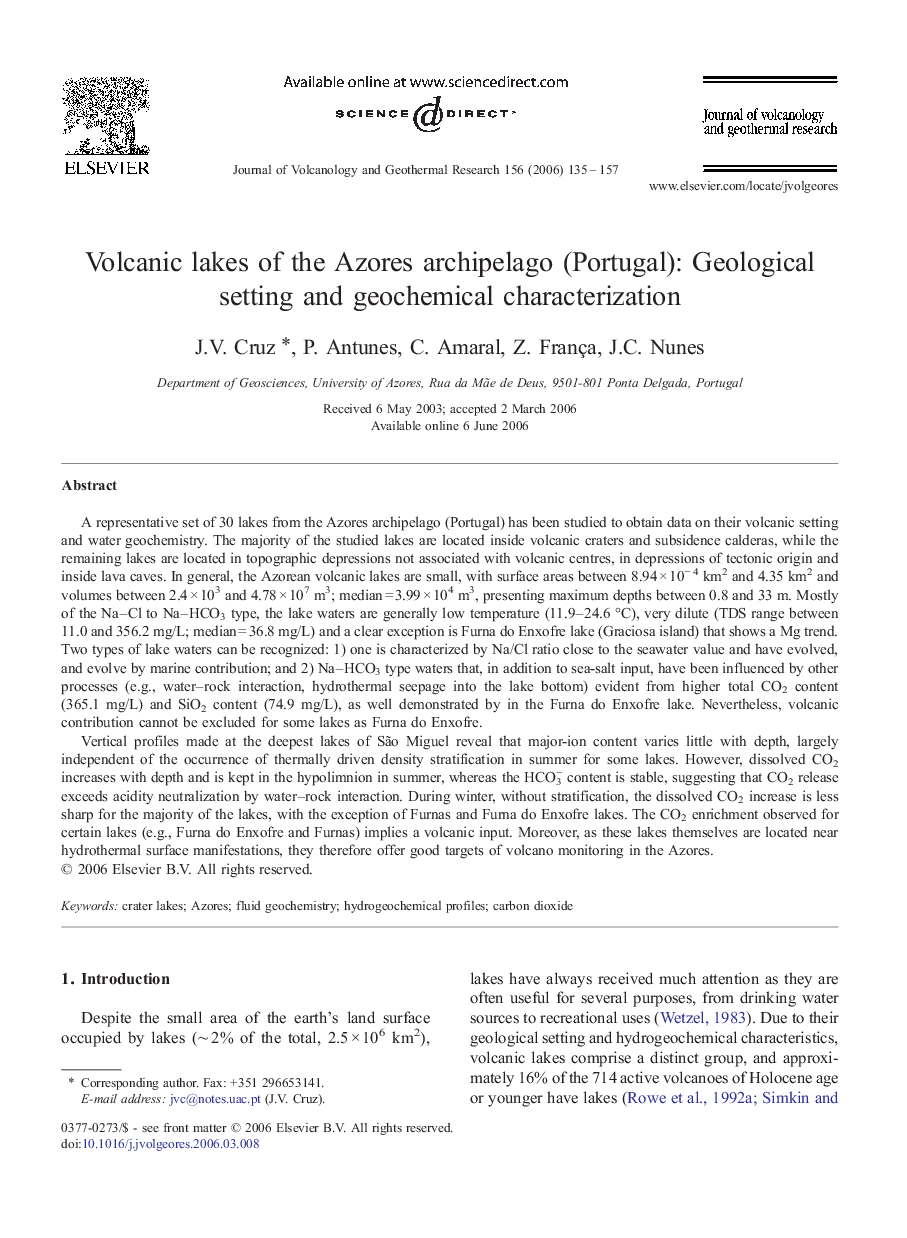| کد مقاله | کد نشریه | سال انتشار | مقاله انگلیسی | نسخه تمام متن |
|---|---|---|---|---|
| 4714993 | 1638474 | 2006 | 23 صفحه PDF | دانلود رایگان |

A representative set of 30 lakes from the Azores archipelago (Portugal) has been studied to obtain data on their volcanic setting and water geochemistry. The majority of the studied lakes are located inside volcanic craters and subsidence calderas, while the remaining lakes are located in topographic depressions not associated with volcanic centres, in depressions of tectonic origin and inside lava caves. In general, the Azorean volcanic lakes are small, with surface areas between 8.94 × 10− 4 km2 and 4.35 km2 and volumes between 2.4 × 103 and 4.78 × 107 m3; median = 3.99 × 104 m3, presenting maximum depths between 0.8 and 33 m. Mostly of the Na–Cl to Na–HCO3 type, the lake waters are generally low temperature (11.9–24.6 °C), very dilute (TDS range between 11.0 and 356.2 mg/L; median = 36.8 mg/L) and a clear exception is Furna do Enxofre lake (Graciosa island) that shows a Mg trend. Two types of lake waters can be recognized: 1) one is characterized by Na/Cl ratio close to the seawater value and have evolved, and evolve by marine contribution; and 2) Na–HCO3 type waters that, in addition to sea-salt input, have been influenced by other processes (e.g., water–rock interaction, hydrothermal seepage into the lake bottom) evident from higher total CO2 content (365.1 mg/L) and SiO2 content (74.9 mg/L), as well demonstrated by in the Furna do Enxofre lake. Nevertheless, volcanic contribution cannot be excluded for some lakes as Furna do Enxofre.Vertical profiles made at the deepest lakes of São Miguel reveal that major-ion content varies little with depth, largely independent of the occurrence of thermally driven density stratification in summer for some lakes. However, dissolved CO2 increases with depth and is kept in the hypolimnion in summer, whereas the HCO3− content is stable, suggesting that CO2 release exceeds acidity neutralization by water–rock interaction. During winter, without stratification, the dissolved CO2 increase is less sharp for the majority of the lakes, with the exception of Furnas and Furna do Enxofre lakes. The CO2 enrichment observed for certain lakes (e.g., Furna do Enxofre and Furnas) implies a volcanic input. Moreover, as these lakes themselves are located near hydrothermal surface manifestations, they therefore offer good targets of volcano monitoring in the Azores.
Journal: Journal of Volcanology and Geothermal Research - Volume 156, Issues 1–2, 1 August 2006, Pages 135–157